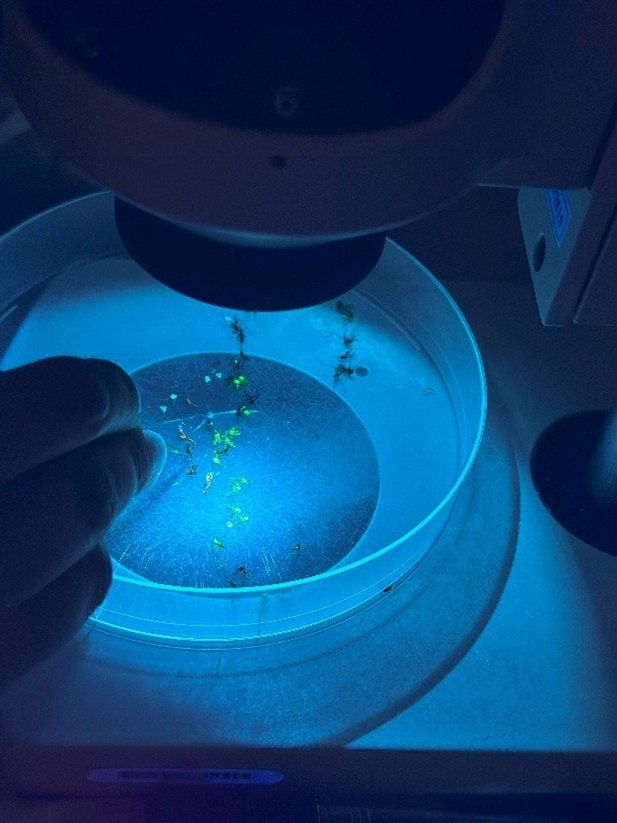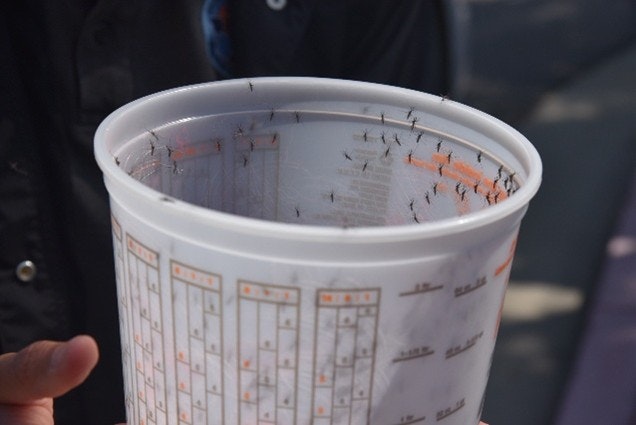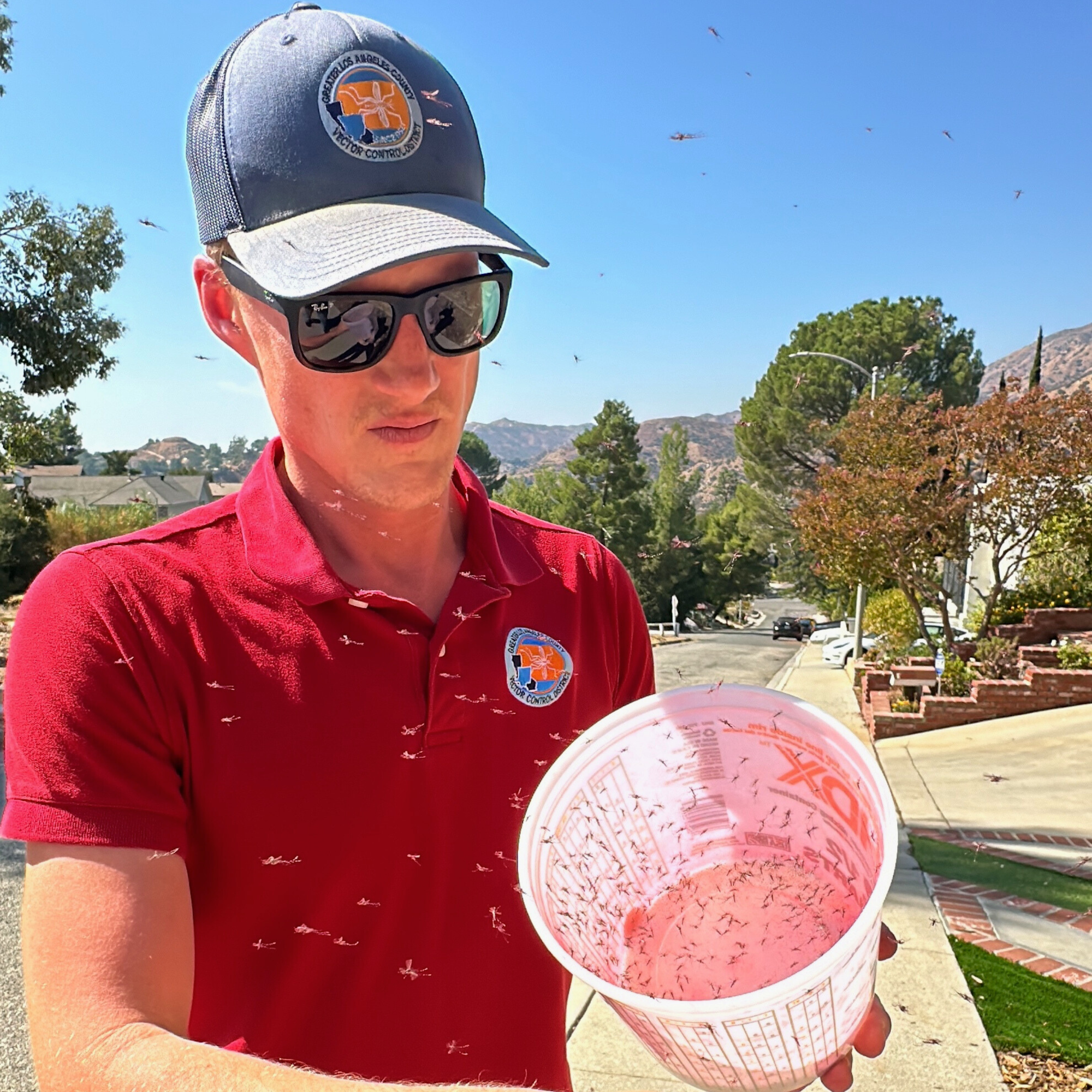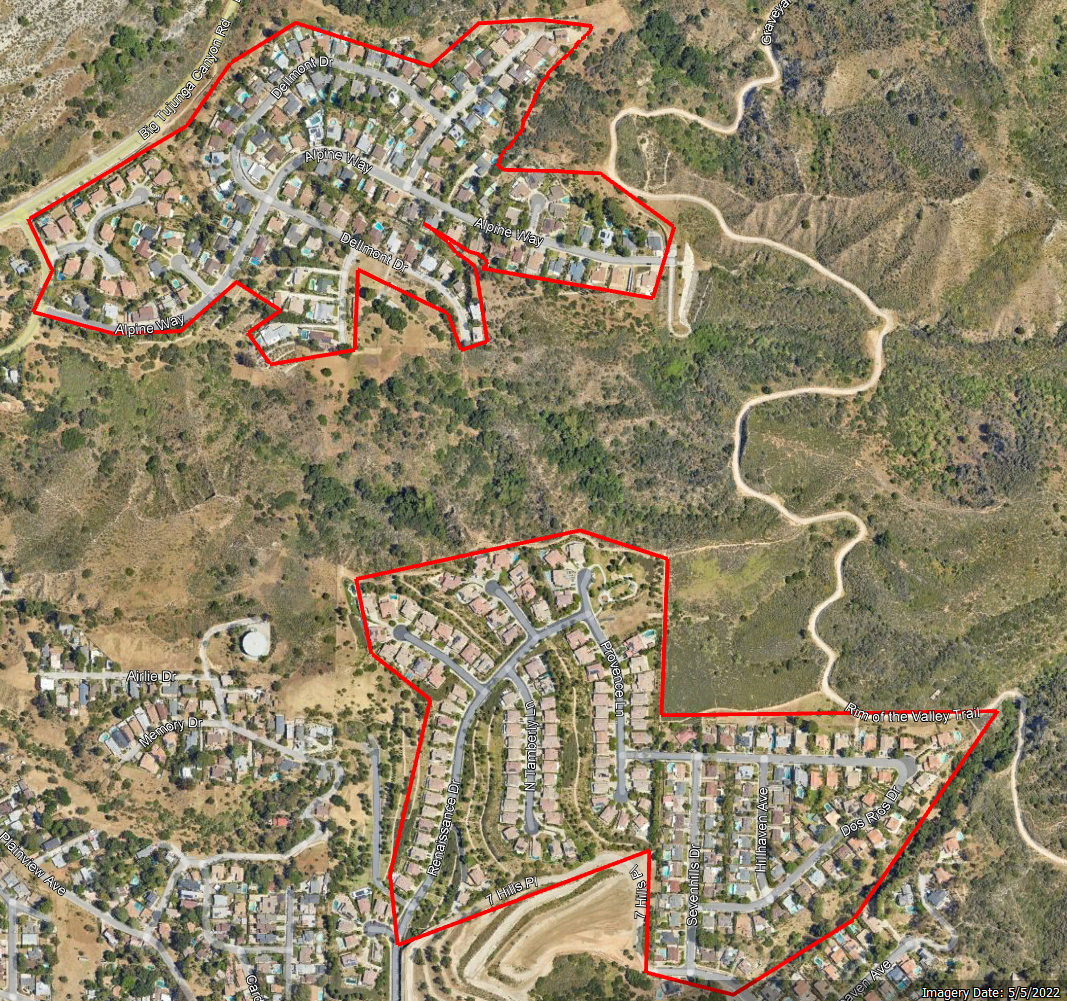Pilot Program Launch in Localized Areas of Sunland-Tujunga
.png?ixlib=rb-1.1.0&w=2000&h=2000&fit=max&or=0&s=b48cf0163b0d20b1dca1c219fc94659c)
Los Angeles, CA (August 2025)- In 2024, the District launched the second phase of its Sterile Insect Technique (SIT) pilot program in the Sunland-Tujunga community. From May through October, non-biting, sterile male Aedes aegypti mosquitoes were released weekly in two 50-acre intervention areas, with a total of approximately 603,000 non-biting sterile males released, averaging 30,000 per week across both neighborhoods.
Despite some challenges in reaching the target release numbers, the program demonstrated a promising reduction in the local Aedes aegypti population. The intervention areas saw a nearly 82% decrease in wild adult mosquitoes compared to the control area, along with significantly lower egg hatch rates. These are clear indicators of successful population suppression.
While additional refinements are needed to improve mosquito rearing and release methods for wider implementation, this pilot program underscores the potential of SIT as part of the District’s integrated vector management approach. The District will continue the SIT pilot in 2025 to further evaluate the method’s efficacy and scalability as part of our mosquito control strategies to safeguard communities from mosquito-borne diseases.






%20(1).png?ixlib=rb-1.1.0&w=2000&h=2000&fit=max&or=0&s=89c1cec3ff5fde3eac662a578fac0a10)






%20(1).png?ixlib=rb-1.1.0&w=2000&h=2000&fit=max&or=0&s=89c1cec3ff5fde3eac662a578fac0a10)
Los Angeles, CA (May 2024)- The Greater Los Angeles County Vector Control District is exploring the use of the Sterile Insect Technique (SIT) to control invasive Aedes aegypti mosquitoes and is evaluating the efficacy of this innovative technology. From May through October 2024, non-biting, sterile male Aedes mosquitoes will be released within the specified zones of Alpine Village and Sevenhills neighborhoods in Sunland-Tujunga. Sterile Insect Technique (SIT) will help reduce the population of disease-transmitting mosquitoes, lower the local population densities, and reduce the possible threat of tropical diseases like dengue fever and chikungunya.
Los Angeles, CA (October 12, 2023) - A new pilot program is underway in the Sunland-Tujunga neighborhood called the Sterile Insect Technique (SIT). SIT is an environmentally safe and chemical-free approach for the control of certain insect pests. The Greater Los Angeles County Vector Control District (GLACVCD) is exploring the use of (SIT) to control invasive Aedes aegypti mosquitoes and is evaluating the efficacy of this innovative technology.
The District released locally acquired and reared, non-irradiated and non-biting male mosquitoes from the area on Thursday, October 12, 2023, within the specified zones of Alpine Village and Sevenhills neighborhoods in Sunland-Tujunga. Once released, the District set traps in these neighborhoods to recollect and recapture the mosquitoes. This helped determine the size of the local mosquito population, how far these mosquitoes can fly, and ensure the efficiency and success of the pilot program in reducing the local population of invasive Aedes aegypti mosquitoes.

Overview of the Pilot Program
An assessment of the invasive, locally acquired Aedes population was conducted for the pilot program during the initial mark, release, and recapture (MRR) evaluation phase. MRR involved marking non-biting & non-sterilized male mosquitoes with a color dye (dust), releasing them, and recapturing them in traps over several weeks.
The District will launch the second phase of the pilot program on May 2, 2024, to October 2024.
In the second phase of the pilot program, the marked, non-biting, sterile male Aedes mosquitoes will be released to mate with the local females. The resulting eggs will not hatch and reduce the mosquito population in the localized area. Traps will be set over several weeks to evaluate the efficiency and success of the program. Releasing Aedes X-rayed sterilized male mosquitoes over several months can significantly reduce the risk of potential outbreaks and mosquito-borne diseases such as dengue, Zika, and chikungunya. SIT is target-specific, reducing the use of insecticides and the chances of pesticide resistance in our mosquito populations. Additionally, this form of SIT is cost-effective when compared to chemical products.
What to Expect
Residents in those communities may see and experience the presence of more male mosquitoes immediately following the release. Remember, male mosquitoes DO NOT BITE.
Only female mosquitoes bite and use the bloodmeal to produce eggs. These marked male mosquitoes will not result in more bites. Residents may see our staff in the field more frequently setting traps to collect mosquitoes.
.png?ixlib=rb-1.1.0&w=2000&h=2000&fit=max&or=0&s=fa86f5de61d014752bdca2c29be26b73)
For any questions or concerns, please contact the Greater Los Angeles County Vector Control District (GLACVCD) at 562-944-9656 or email: info@GLAmosquito.org.
About GLACVCD
The Greater Los Angeles County Vector Control District is a public health service agency formed under the authority of the California State Health & Safety Code. Our mission is to reduce populations of public health vectors below nuisance levels and prevent human infection associated with mosquito-transmitted diseases.
